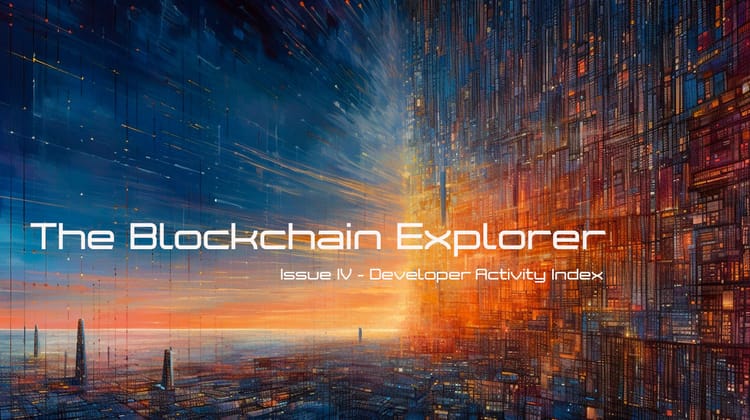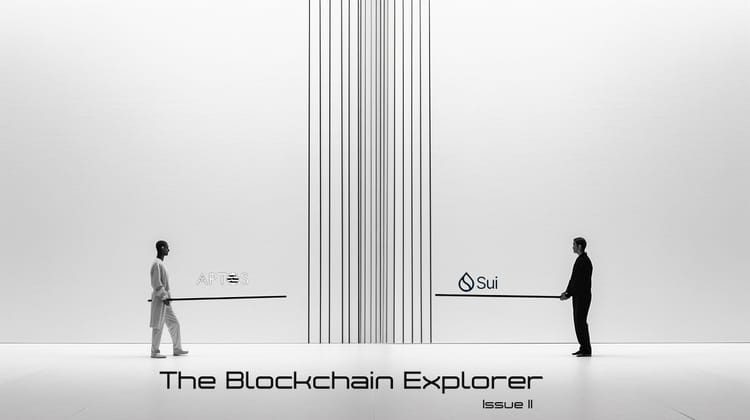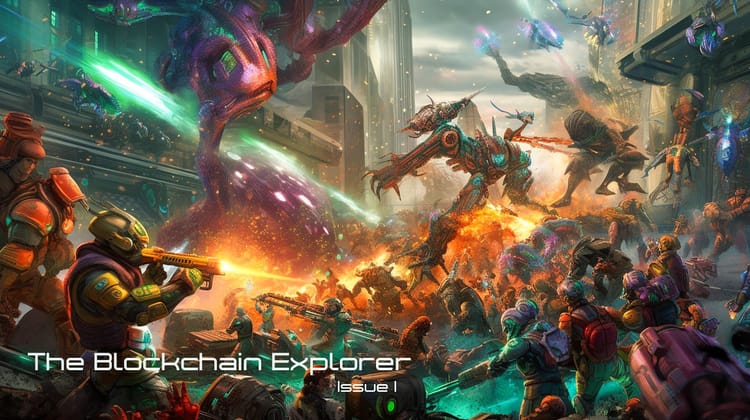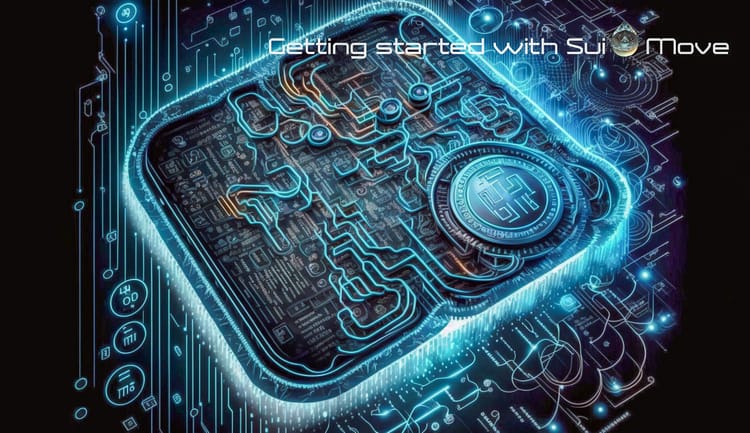Solidity vs. Move: A Comprehensive Comparison for Smart Contract Development in 2023
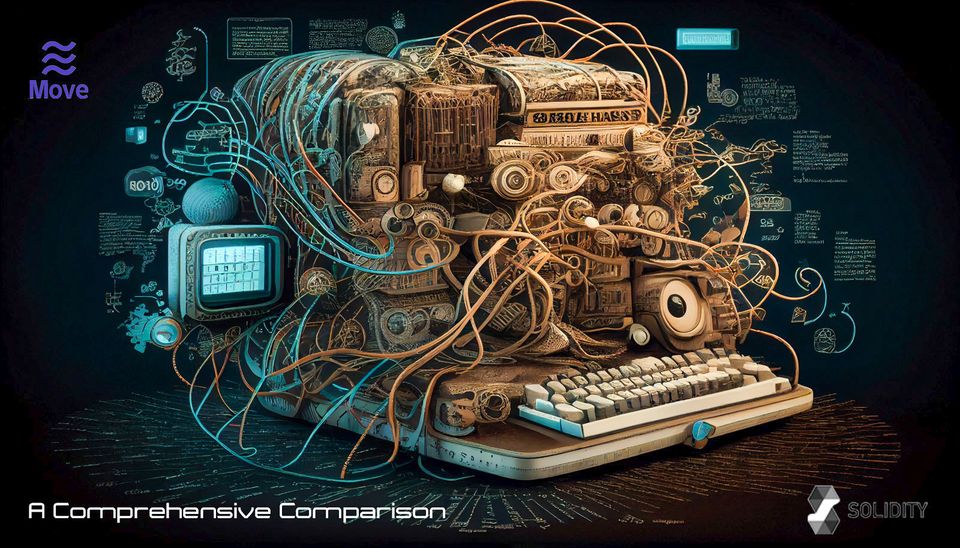
The world of blockchain technology is constantly evolving, and the demand for innovative and secure solutions for smart contract development has never been higher. In 2023, two programming languages have risen to prominence as the leading choices for developers in this space: Solidity and Move.
With search trends indicating a growing interest in comparing these two languages, this article delves into their respective strengths, weaknesses, and potential use cases. Covering a range of topics from security and performance to developer experience and future prospects, our in-depth analysis aims to provide valuable insights for those looking to make an informed decision on which language to adopt for their next blockchain project.
A Closer Look at Solidity and Move
Solidity: Ethereum's Cornerstone Language
- The Birth and Evolution of Solidity
Solidity emerged as the primary programming language for the Ethereum blockchain in 2014, quickly becoming the go-to choice for smart contract developers. Its rapid growth can be attributed to Ethereum's expansion and success, which fostered a diverse ecosystem of decentralized applications (DApps), decentralized finance (DeFi), and non-fungible tokens (NFTs).
- Solidity's Key Features and Syntax
As a statically-typed, contract-oriented language, Solidity shares similarities with JavaScript in terms of syntax. It enables developers to create and deploy smart contracts on the Ethereum Virtual Machine (EVM), providing an ideal environment for blockchain applications. Solidity supports inheritance, libraries, and complex data types, making it possible to develop modular and reusable code.
- Ecosystem and Developer Support
The maturity of Solidity has resulted in a robust ecosystem of tools and frameworks, such as Truffle, Hardhat, and Remix, which streamline the development and deployment processes. The extensive developer community has also generated a wealth of documentation, tutorials, and best practices, making Solidity an accessible option for those entering the blockchain space.
Move: The Language that Powered Facebook's Diem
- The Origins of Move and its Goals
Introduced in 2019, Move is the programming language developed for Facebook's Diem blockchain. Initially part of the Libra project, Diem's mission is to create a stable, secure, and efficient global payment system. Move was designed from the ground up with a focus on safety, flexibility, and verifiability in smart contract development.
- Move's Unique Features and Syntax
One of the distinguishing features of Move is the introduction of "resource types," an innovative approach to representing digital assets that prevents accidental duplication or deletion. This feature enhances security and mitigates common smart contract vulnerabilities. Inspired by Rust, Move's syntax is designed to minimize foot-gun potential by enforcing strict typing and access controls.
- Building a Supportive Community
While Move's ecosystem is still in its early stages compared to Solidity, it is quickly gaining traction. Facebook's backing has attracted significant attention, with a growing number of developers embracing the language. Among others , two of the popular Blockchain - Aptos and Sui (spin-off from facebook's Diem) are using Move.
Comparing Solidity and Move: Key Factors to Consider
A. Safety and Security
Solidity's Security Challenges
Historically, Solidity has experienced several high-profile exploits, raising concerns about its safety. However, recent updates to the language, along with improved best practices, have enhanced its security profile. Nonetheless, developers need to be vigilant to avoid potential pitfalls.
Move's Focus on Security
- Resource Types and Safety - One of the core features of Move that sets it apart from Solidity is its innovative approach to asset management using resource types. These resource types represent digital assets with distinct ownership semantics that prevent accidental duplication or deletion. By ensuring that resources are never copied or discarded without proper authorization, Move significantly enhances security in smart contract development.
- Strict Typing and Access Controls - Move employs strict typing and access controls to minimize the risk of programming errors and vulnerabilities. By enforcing these controls, Move helps developers avoid common mistakes that can lead to serious security breaches. This design choice results in a safer environment for building and deploying smart contracts.
- Formal Verification and Auditability - Move emphasizes formal verification and auditability, which are critical for ensuring the security and correctness of smart contracts. The Move Intermediate Representation (Move IR) and the Move Prover enable developers to specify and verify properties of their smart contracts. These tools aid in detecting errors and vulnerabilities early in the development process, thus reducing the risk of exploits.
- Modular and Encapsulated Design - Move promotes a modular and encapsulated design for smart contracts, which contributes to better security practices. By encouraging developers to build modular components with well-defined interfaces, Move reduces the likelihood of unexpected interactions between components that could result in vulnerabilities. This design approach makes it easier to reason about the behavior of a smart contract and its potential attack surfaces.
- Lessons Learned from Solidity's History - Move's focus on security is partly a response to the lessons learned from Solidity's history of high-profile exploits. By prioritizing safety and addressing the most common sources of vulnerabilities, Move aims to provide a more secure foundation for smart contract development. As the language matures, it is expected that additional features and best practices will be introduced to further enhance its security profile.
In summary, Move's focus on security is evident in its innovative resource types, strict typing and access controls, emphasis on formal verification, modular design, and the incorporation of lessons learned from Solidity's history. These features collectively contribute to a safer environment for smart contract development, making Move an attractive option for developers seeking a secure programming language for blockchain applications.
B. Performance and Scalability
- Solidity and Ethereum's Limitations
Solidity has faced criticism for limited scalability and performance issues, primarily due to the inherent constraints of the Ethereum blockchain. Developers often have to work around these limitations when building large-scale applications.
- Move's Scalability Promise
Move, on the other hand, has been designed with scalability in mind. The Diem blockchain's unique consensus mechanism, Byzantine Fault Tolerance, promises better performance, making it an attractive option for developers seeking enhanced scalability.
Developer Experience and Learning Curve
- Solidity's Extensive Ecosystem
Solidity's widespread adoption, comprehensive documentation, and mature ecosystem make it an appealing choice for developers. However, unique quirks and potential security pitfalls can present challenges for newcomers to the language. It is essential for developers to familiarize themselves with Solidity's intricacies and follow best practices to avoid common mistakes.
- Move's Emerging Landscape
Move offers a safer development environment due to its stricter syntax and resource management. However, its nascent ecosystem and lesser-known syntax may prove more challenging for beginners to navigate.
The Future of Solidity and Move: Coexistence or Competition?
A. Interoperability and Cross-Chain Development
As the blockchain industry evolves, interoperability between different networks is becoming increasingly important. The future may see Solidity and Move coexisting, with developers leveraging the unique strengths of each language for specific applications. Cross-chain development tools and platforms, such as Cosmos and Polkadot, could facilitate this coexistence, allowing developers to build on multiple networks seamlessly.
B. Market Adoption and Industry Trends
The success of a programming language often depends on market adoption and industry trends. Solidity's dominance in the Ethereum ecosystem appears secure for the foreseeable future. However, Move's is starting to ramp up with Aptos and Sui already using it.
C. Predictions and Future Prospects
While Solidity remains the industry standard for smart contract development, Move's potential cannot be ignored. The future could see Move gaining ground, particularly if the Sui and Aptos blockchain delivers on its promise of a more secure and scalable alternative to Ethereum. Regardless of the outcome, competition between Solidity and Move will drive innovation and push the boundaries of blockchain technology, ultimately benefiting the entire ecosystem.
Conclusion: Choosing the Right Language for Your Project
The decision between Solidity and Move ultimately depends on the specific requirements of a project, the developer's familiarity with each language, and the long-term goals of the blockchain application.
Solidity offers a mature ecosystem and a vast developer community, while Move promises safety, security, and scalability. Both languages have unique strengths, and developers should carefully weigh the benefits and drawbacks before committing to one or the other.
As the blockchain landscape continues to evolve, it will be fascinating to see how the rivalry between Solidity and Move shapes the future of smart contract development and decentralized applications. By staying informed and adaptive, developers can harness the power of these programming languages to create cutting-edge solutions in the rapidly expanding world of blockchain technology.
Please share your thoughts on the article by clicking below Emoji ...
Disclosure
*The information provided on this cryptocurrency blog is for educational and informational purposes only and should not be construed as financial, investment, or trading advice. The authors, contributors, and administrators of this blog are not licensed financial professionals and do not hold any formal qualifications in the fields of finance, economics, or cryptocurrencies.
The content on this blog is based on the authors' personal opinions, experiences, and research, and should not be considered as professional financial guidance. While we strive to provide accurate, up-to-date, and reliable information, we cannot guarantee the accuracy or completeness of the information presented. Cryptocurrency markets are highly volatile, and investments in cryptocurrencies and related assets carry a substantial risk of loss.
Before making any financial decisions or investments, you should consult with a qualified financial advisor or perform your own research and analysis. Any actions taken based on the information provided on this blog are at your own risk, and the authors, contributors, and administrators of this blog cannot be held liable for any losses or damages resulting from the use of the information found herein.
By using this blog, you acknowledge that you have read and understood this disclosure and agree to assume full responsibility for any decisions or actions you take based on the information provided.*




